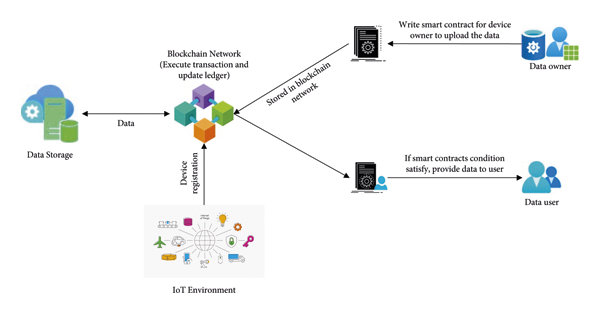Cotflt charges are fundamental to air travel pricing, shaping the overall cost of flying for passengers worldwide.
Cotflt charges, also known as airline surcharges or carrier-imposed fees, are additional expenses beyond the base fare of a flight ticket. They cover various operational costs such as fuel, security, and airport taxes.
In this article, we delve into the intricacies of corporate charges, exploring how they work, the types of charges involved, their benefits and challenges, and their significance in the broader context of air travel.
How Cotflt Charges Work?
1. Dynamic Pricing Structures:
Cotflt charges, often referred to as airline surcharges or carrier-imposed fees, are additional expenses beyond the base fare of a ticket. These charges encompass various aspects of air travel, including fuel surcharges, security fees, and airport taxes.
2. Factors Influencing Cotflt Charges:
Fuel prices play a significant role in determining cotflt charges, as airlines must account for fluctuations in fuel costs when setting surcharges. Additionally, regulatory requirements and government taxes can impact cotflt charges, particularly in international travel.
3. Transparent Pricing For Passengers:

While cotflt charges are integrated into the total ticket price, transparency in pricing is crucial for passengers to understand the breakdown of fees associated with their air travel.
4. Adapting To Market Conditions:
Cotflt charges are not fixed and can vary based on market conditions and airline policies. Airlines may adjust cotflt charges in response to changes in fuel prices, regulatory requirements, or operational costs.
Types Of Cotflt Charges:
1. Direct Cotflt Charges:
Direct cotflt charges are those explicitly levied by airlines as part of the ticket price. These charges may include fuel surcharges, security fees, and airport taxes. Passengers typically see these charges itemized on their ticket receipts, separate from the base fare.
2. Indirect Cotflt Charges:
Indirect cotflt charges encompass costs that indirectly affect air travel prices. These may include fees paid by airlines to third-party service providers, such as airport authorities or regulatory agencies.
While passengers may not see these charges listed separately, they indirectly contribute to the overall cost of air travel.
Benefits Of Cotflt Charges:
1. Revenue Generation:
One of the primary benefits of cotflt charges is their role in revenue generation for airlines. As carriers face increasing operating costs, cotflt charges provide a way to supplement income beyond the base fare.
2. Resource Allocation:

Cotflt charges also play a role in resource allocation within the aviation industry. Airlines can allocate resources more efficiently by charging passengers for specific services or amenities.
For example, funds collected through security fees may be used to enhance airport security measures, benefiting all travelers.
3. Environmental Impact:
Some cotflt charges are designed to encourage environmentally friendly practices within the aviation industry. For instance, airlines may impose carbon offset fees to mitigate the environmental impact of air travel.
Challenges Associated With Cotflt Charges:
1. Opposition From Airlines:
Airlines often face backlash from passengers over perceived excessive cotflt charges. In an increasingly competitive market, carriers must balance revenue generation with customer satisfaction.
2. Economic Implications:
Cotflt charges can have broader economic implications, affecting both the aviation industry and the economy as a whole. Excessive charges may lead to decreased demand for air travel, impacting airline profitability and overall industry growth.
3. Implementation Issues:
Implementing cotflt charges effectively requires coordination among airlines, regulatory bodies, and other stakeholders. Complex pricing structures and varying regulations across different jurisdictions can create challenges for airlines seeking to levy cotflt charges consistently.
Innovation In Cotflt Charge Systems:
1. Dynamic Pricing Algorithms:
Airlines are increasingly leveraging dynamic pricing algorithms to adjust cotflt charges in real-time based on factors such as demand, seasonality, and market conditions.
2. Blockchain Technology Integration:

The integration of blockchain technology holds promise for enhancing transparency and accountability in cotflt charge transactions.
By utilizing blockchain-based platforms, airlines can streamline payment processes and provide passengers with a secure and immutable record of their surcharges.
3. Personalized Pricing Models:
Advancements in data analytics enable airlines to implement personalized pricing models, tailoring cotflt charges to individual passenger preferences and travel behaviors.
4. Predictive Modeling:
Predictive modeling techniques allow airlines to forecast future demand and adjust cotflt charges accordingly.
By analyzing historical data and market trends, airlines can anticipate demand fluctuations and preemptively adapt surcharges, optimizing revenue and enhancing pricing efficiency.
Integration Of Financial Services:
Moreover, with the rise of financial services like Capital One Travel, travelers have more options to manage their expenses and potentially offset cotflt charges through rewards programs and discounts offered by such platforms.
Services like Capital One Travel allow travelers to optimize their spending and maximize benefits, influencing their overall experience with air travel.
Global Perspectives On Cotflt Charges:
Cotflt charges vary significantly across regions, reflecting the diverse regulatory environments, market conditions, and airline practices worldwide.
1. Cotflt Charges Around The World:
Countries adopt various approaches to cotflt charges, ranging from stringent regulation to market-driven pricing. In some regions, governments impose fixed fees or taxes on air travel, affecting the overall cost for passengers.
2. Success Stories And Lessons Learned:
Several countries have implemented innovative cotflt charge systems that balance revenue generation with consumer satisfaction.
By studying these success stories, policymakers and industry stakeholders can identify best practices and lessons learned for optimizing cotflt charge policies.
Conclusion:
Cotflt charges play a crucial role in the economics of air travel, serving as a means of revenue generation and resource allocation for airlines. While they offer benefits such as supporting sustainability initiatives, cotflt charges face regulatory scrutiny and consumer backlash. By addressing these challenges and embracing innovation, the aviation industry can optimize cotflt charge policies for the benefit of all stakeholders.
Related Questions:
1. How Are Cotflt Charges Calculated?
Cotflt charges are calculated based on factors such as destination, route, class of service, and operational costs incurred by the airline.
2. Why Are Cotflt Charges Important?
Cotflt charges are essential for revenue generation, resource allocation, and incentivizing environmentally friendly practices within the aviation industry.
3. What Are The Main Challenges Associated With Cotflt Charges?
Challenges associated with cotflt charges include airline opposition, economic implications, and implementation issues related to regulation and transparency.
4. How Do Cotflt Charges Vary Globally?
Cotflt charges vary globally due to differences in regulatory environments, market conditions, and airline pricing strategies.
Read:
